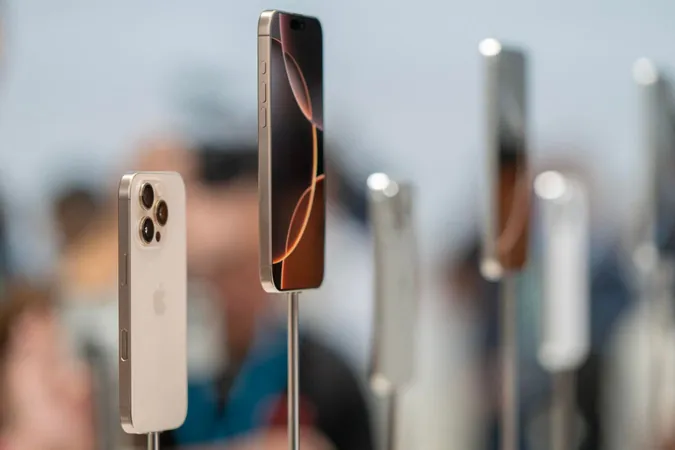
Revolutionary Study Reveals How Seeing Inside Products Can Boost Sales!
2024-09-16
Groundbreaking Study from the University of Buffalo
A groundbreaking study from the University of Buffalo's School of Management has unveiled that showcasing the inner workings of products can significantly enhance consumer confidence and boost sales. This innovative research, which is set to be published in the Journal of Marketing, throws light on how companies can strategically employ anatomical depictions in their marketing efforts to increase perceived product value.
The Influence of Da Vinci
According to co-author Arun Lakshmanan, an associate professor of marketing, this technique isn't just novel; it hearkens back to the meticulous illustrations of Leonarda da Vinci, who famously illustrated the inner mechanisms of machines. “Just like da Vinci's work has influenced diverse fields, the trend of visually representing product structure can now be pivotal in marketing, particularly in areas such as DIY furniture or car repair,” Lakshmanan explains.
Comprehensive Analysis Across Demographics
The research team conducted an extensive analysis through nine different studies, engaging a variety of consumer demographics across multiple brands and product categories. They discovered that an effective way to convey a product's reliability and usability is by visually illustrating its internal components. For example, when consumers encounter two images of noise-cancelling headphones—one simple and straightforward, the other detailing every part from ear pads to the battery—they are more likely to trust and invest in the version with the detailed depiction.
Multi-Layered Visual Strategies
This study suggests a compelling marketing strategy that involves presenting products in a multi-layered visual format. By doing so, potential buyers perceive increased value in what they are purchasing, substantially influencing their purchasing decisions.
Target Audience Insights
Moreover, the findings specify that not all consumers respond equally to these marketing techniques. The study indicates that tech-savvy individuals, who are more inclined to appreciate the mechanics behind a product, are the primary target audience for achieving maximum impact through anatomical visuals. Conversely, consumers who exhibit anxiety toward technology or lack curiosity about product functionality might not benefit from this type of depiction.
Implications for Businesses
As businesses strive to navigate an increasingly competitive marketplace, harnessing the power of visual representation can serve as a game-changer. So, the next time you’re shopping online, keep an eye out for those intricate illustrations—they just might be the key to understanding your purchase better!
Collaborative Efforts in Research
This study was co-authored by UB graduates Seo Yoon Kang, now an assistant professor of marketing at the University of New Hampshire, and Junghan Kim from Singapore Management University. Their collective research efforts highlight an innovative approach that could reshape how products are marketed in the digital age.




 Brasil (PT)
Brasil (PT)
 Canada (EN)
Canada (EN)
 Chile (ES)
Chile (ES)
 España (ES)
España (ES)
 France (FR)
France (FR)
 Hong Kong (EN)
Hong Kong (EN)
 Italia (IT)
Italia (IT)
 日本 (JA)
日本 (JA)
 Magyarország (HU)
Magyarország (HU)
 Norge (NO)
Norge (NO)
 Polska (PL)
Polska (PL)
 Schweiz (DE)
Schweiz (DE)
 Singapore (EN)
Singapore (EN)
 Sverige (SV)
Sverige (SV)
 Suomi (FI)
Suomi (FI)
 Türkiye (TR)
Türkiye (TR)